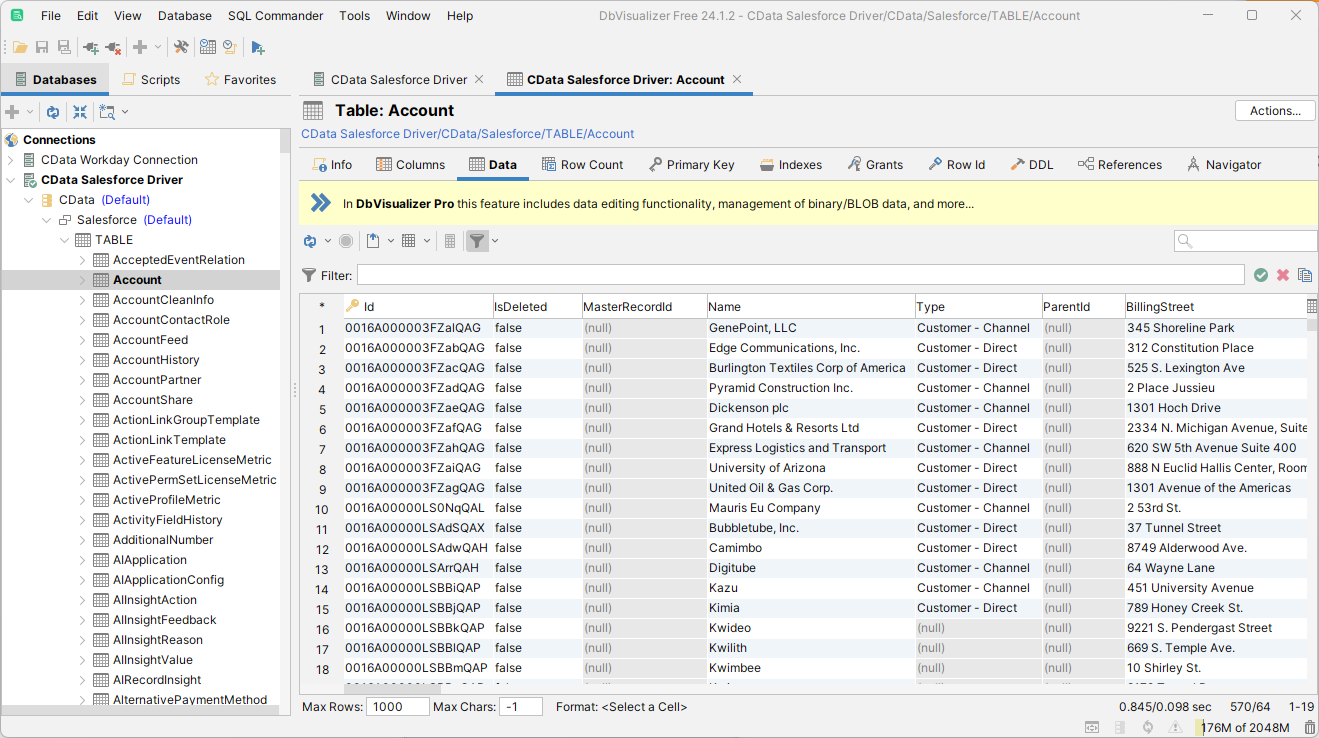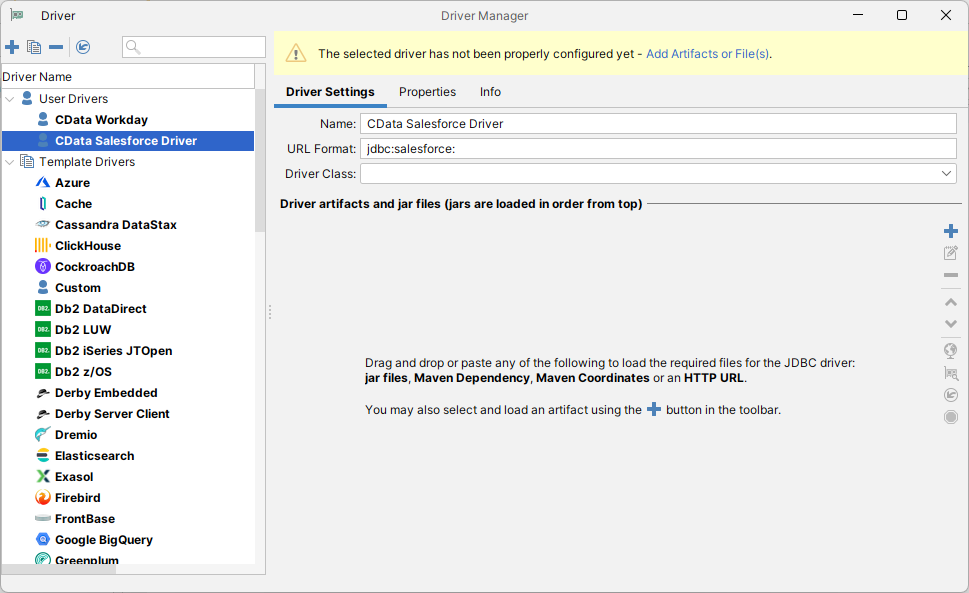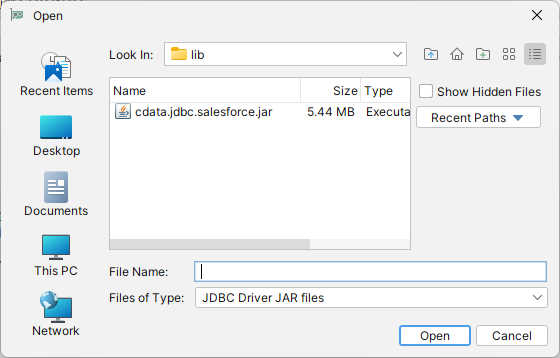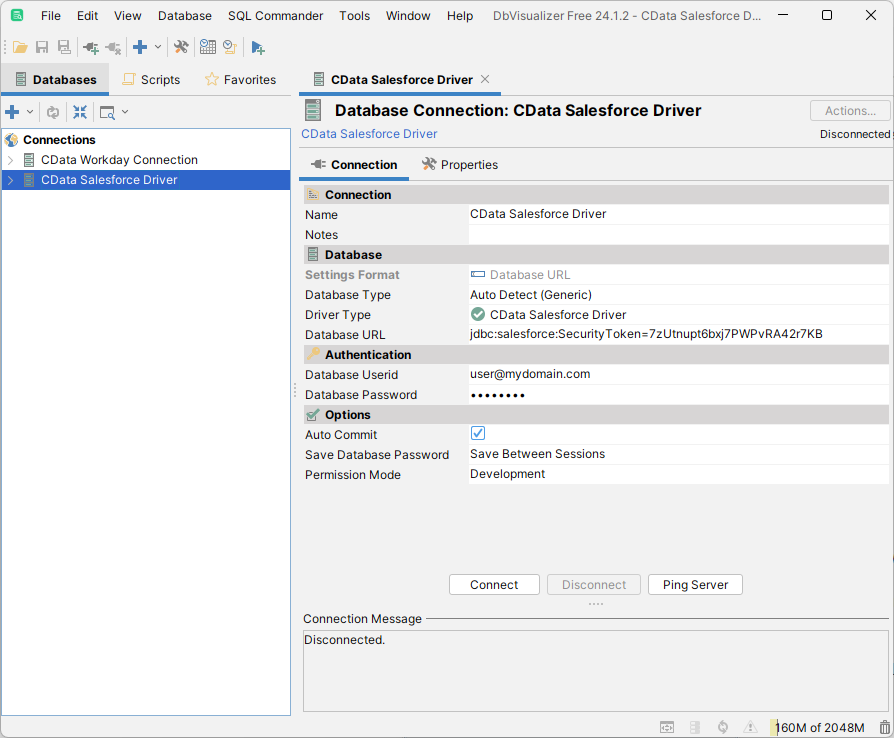Discover how a bimodal integration strategy can address the major data management challenges facing your organization today.
Get the Report →How to connect to SAP Data in DBVisualizer
Integrate SAP data with visual data analysis tools and data connection wizards in DBVisualizer
The CData JDBC Driver for SAP ERP implements JDBC standards to provide connectivity to SAP data in applications ranging from business intelligence tools to IDEs. This article shows how to establish a connection to SAP data in DBVisualizer and use the table editor to load SAP data.
About SAP Data Integration
CData provides the easiest way to access and integrate live data from SAP. Customers use CData connectivity to:
- Access every edition of SAP, including SAP R/3, SAP NetWeaver, SAP ERP / ECC 6.0, and SAP S/4 HANA on premises data that is exposed by the RFC.
- Perform actions like sending IDoc or IDoc XML files to the server and creating schemas for functions or queries through SQL stored procedures.
-
Connect optimally depending on where a customer's SAP instance is hosted.
- Customers using SAP S/4HANA cloud public edition will use SAP NetWeaver Gateway connectivity
- Customers using SAP S/4HANA private edition will use either SAP ERP or SAP NetWeaver Gateway connectivity.
While most users leverage our tools to replicate SAP data to databases or data warehouses, many also integrate live SAP data with analytics tools such as Tableau, Power BI, and Excel.
Getting Started
Create a New Driver Definition for SAP Data
Follow the steps below to use the Driver Manager to provide connectivity to SAP data from DBVisualizer tools.
- In DBVisualizer, click Tools -> Driver Manager.
- Click the plus sign "" to create a new driver.
- Select "Custom" as the template.
- On the Driver Settings tab:
- Set Name to a user-friendly name (e.g. "CData SAP Driver")
- Set URL Format to jdbc:saperp:
![Setting the Driver Settings (Salesforce is shown).]()
- In Driver artifacts and jar files (jars are loaded in order from top):
- Click the plus sign "" -> "Add Files"
- Navigate to the "lib" folder in the installation directory (C:\Program Files\CData[product_name] XXXX\)
- Select the JAR file (cdata.jdbc.SAPERP.jar) and click "Open"
![Loading the driver JAR file.]()
- The Driver Class should populate automatically. If not, select class (cdata.jdbc.saperp.SAPERPDriver).
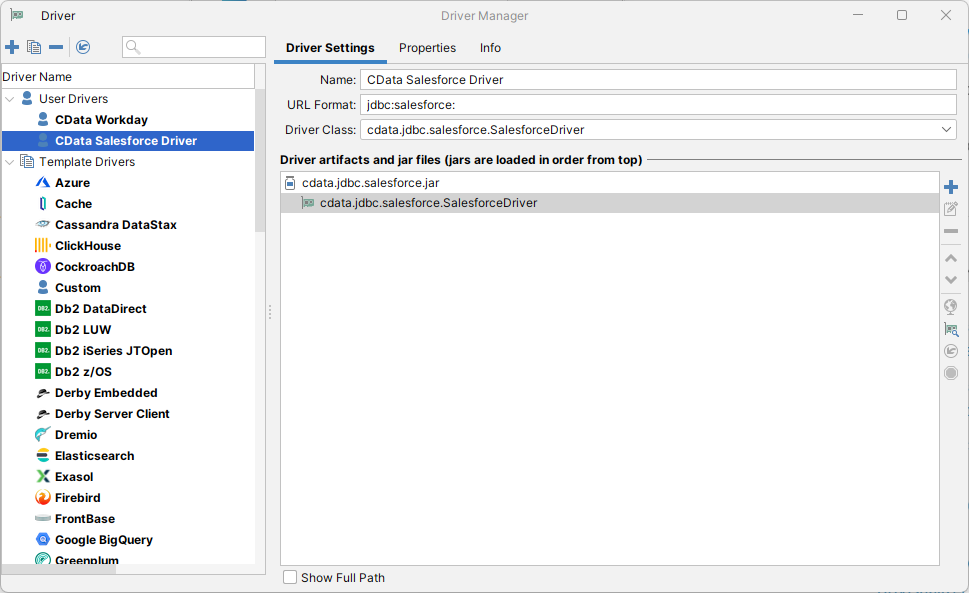
Define the Connection to the JDBC Data Source
Close the "Driver Manager" and follow the steps below to save connection properties in the JDBC URL.
- In the "Databases" tab, click the plus sign "" and select the driver you just created.
In the "Connection" section, set the following options:
- Database Type: If you selected the wizard option, the database type is automatically detected. If you selected the "No Wizard" option, select the Generic or Auto Detect option in the Database Type menu.
- Driver Type: Select the driver you just created.
Database URL: Enter the full JDBC URL. The syntax of the JDBC URL is jdbc:saperp: followed by the connection properties in a semicolon-separated list of name-value pairs.
The driver supports connecting to an SAP system using the SAP Java Connector (SAP JCo). Install the files (sapjco3.jar and sapjco3.dll) to the appropriate directory for the hosting application or platform. See the "Getting Started" chapter in the help documentation for information on using the SAP JCo files.
In addition, you can connect to an SAP system using Web services (SOAP). To use Web services, you must enable SOAP access to your SAP system and set the Client, RFCUrl, User, and Password properties, under the Authentication section.
For more information, see this guide on obtaining the connection properties needed to connect to any SAP system.
Built-in Connection String Designer
For assistance in constructing the JDBC URL, use the connection string designer built into the SAP JDBC Driver. Either double-click the JAR file or execute the jar file from the command-line.
java -jar cdata.jdbc.saperp.jarFill in the connection properties and copy the connection string to the clipboard.
![Using the built-in connection string designer to generate a JDBC URL (Salesforce is shown.)]()
When you configure the JDBC URL, you may also want to set the Max Rows connection property. This will limit the number of rows returned, which is especially helpful for improving performance when designing reports and visualizations.
A typical connection string is below:
jdbc:saperp:Host=sap.mydomain.com;User=EXT90033;Password=xxx;Client=800;System Number=09;ConnectionType=Classic;Location=C:/mysapschemafolder;- NOTE: Database Userid and Database Password correspond with the User and Password properties for SAP.
- On the Connection tab, click Connect.
![A newly configured Database Connection. (Salesforce is shown.)]()
To browse through tables exposed by the SAP JDBC Driver, right-click a table and click "Open in New Tab."
To execute SQL queries, use the SQL Commander tool: Click SQL Commander -> New SQL Commander. Select the Database Connection, Database, and Schema from the available menus.
See the "Supported SQL" chapter in the help documentation for more information on the supported SQL. See the "Data Model" chapter for table-specific information.
